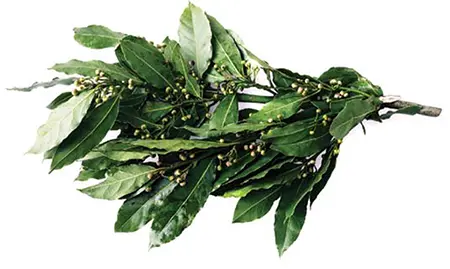
Discovering the Origins
Bay Laurel (Laurus nobilis), an aromatic evergreen tree from the Mediterranean, is renowned for its bay leaves used in cooking. The leaves, which can be fresh or dried, impart a strong flavor but are typically removed before serving due to their tough texture. A practical tip in the kitchen: placing a bay leaf in containers of rice or flour deters pests.
Historical Significance and Lore
In ancient times, laurel wreaths symbolized honor and victory, inspiring the term ‘laureate’ and the phrase ‘resting on one’s laurels’. The Greek god Apollo is often depicted with a laurel wreath, symbolizing his unrequited love for the nymph Daphne.
Healing Uses
Bay laurel oil, used in massages, relieves muscle aches, while a salve treats bruises, itching, and skin irritations. Tea made from leaves and berries aids digestion and calms the mind. Bay laurel in bathwater can treat vaginal infections and aid post-childbirth healing. Burning bay leaves purifies spaces after illness.
Magical Uses
Effective in purification and smudging rituals, bay laurel, when mixed with sandalwood, can break curses. It’s used in meditation for clairvoyance and placed in pillowcases for sound sleep and prophetic dreams.
Personal and Spiritual Growth
Bay laurel enhances intuition, awareness, and perception. A candle dressed with bay laurel oil can facilitate personal change. Writing wishes on a bay leaf and burning it is a practice for manifestation. Bay laurel essential oil boosts confidence, inspiration, and creativity.
